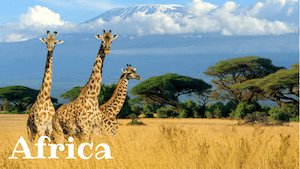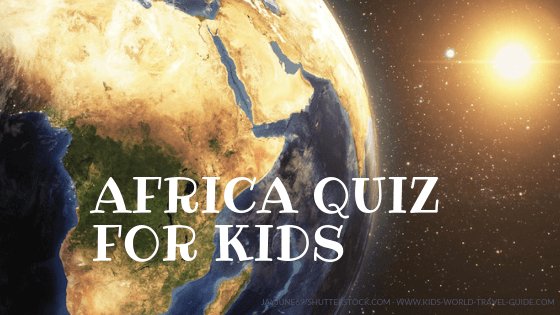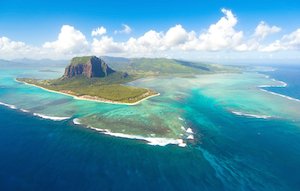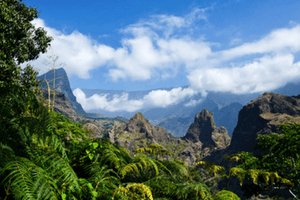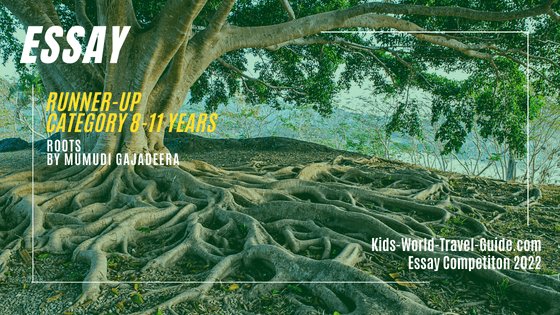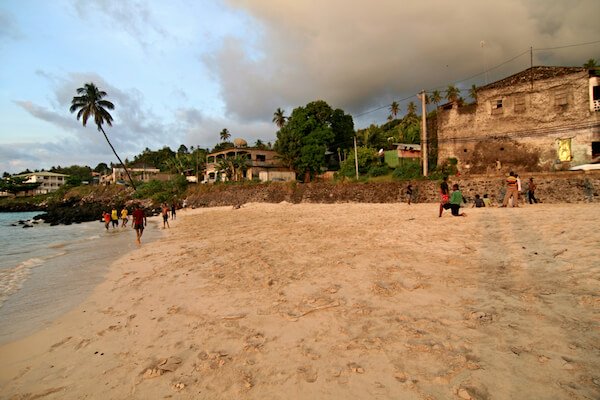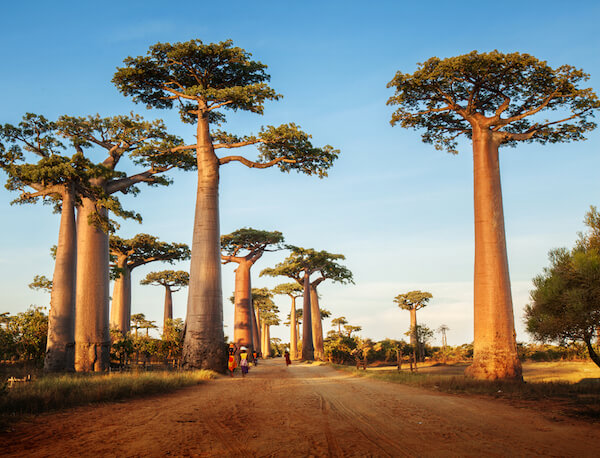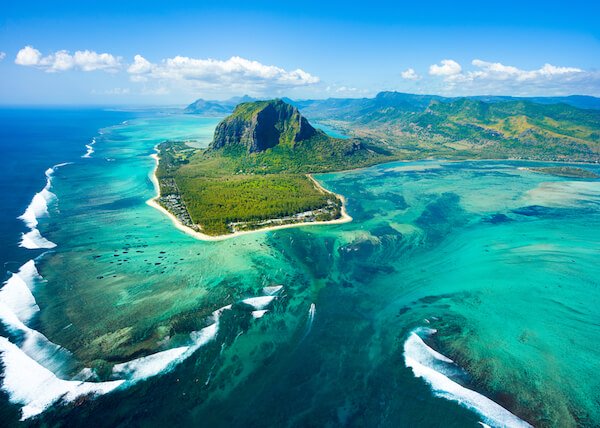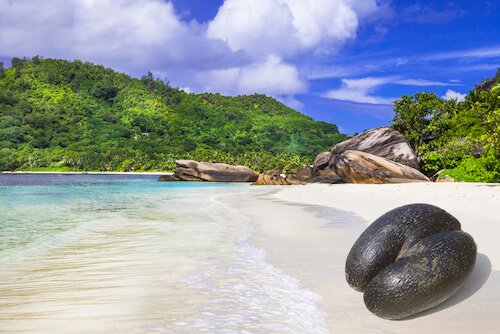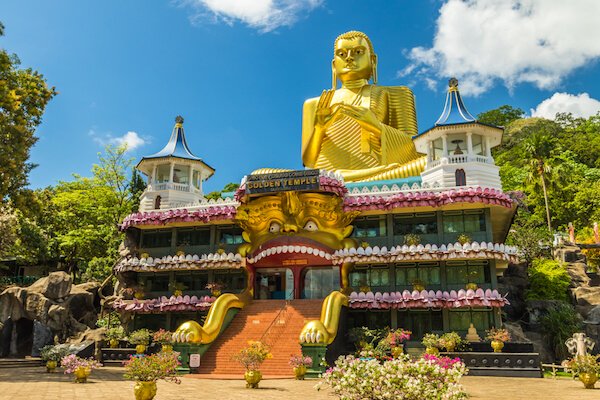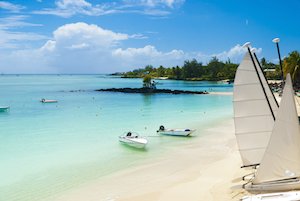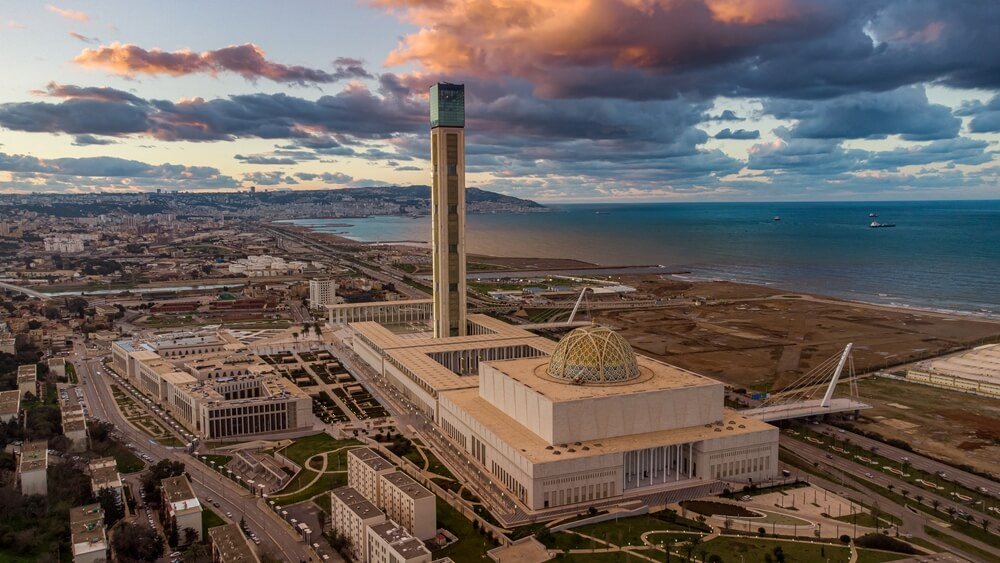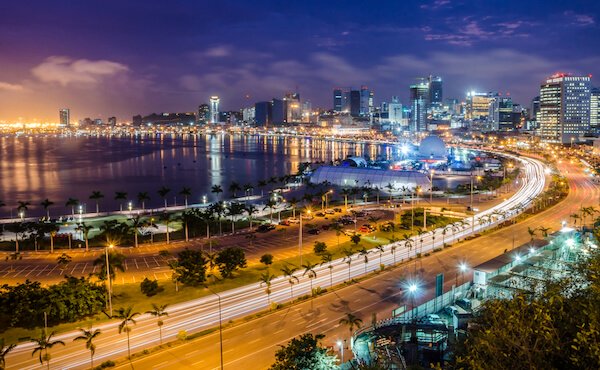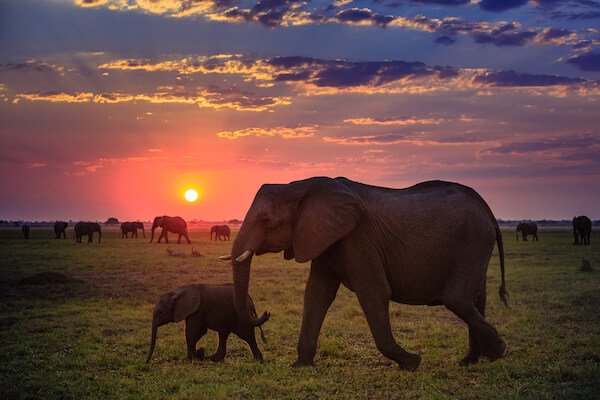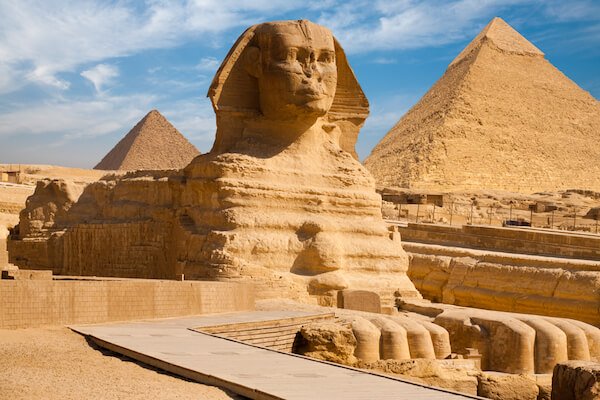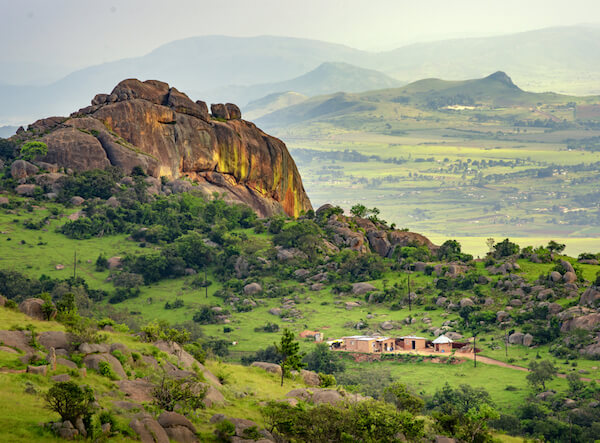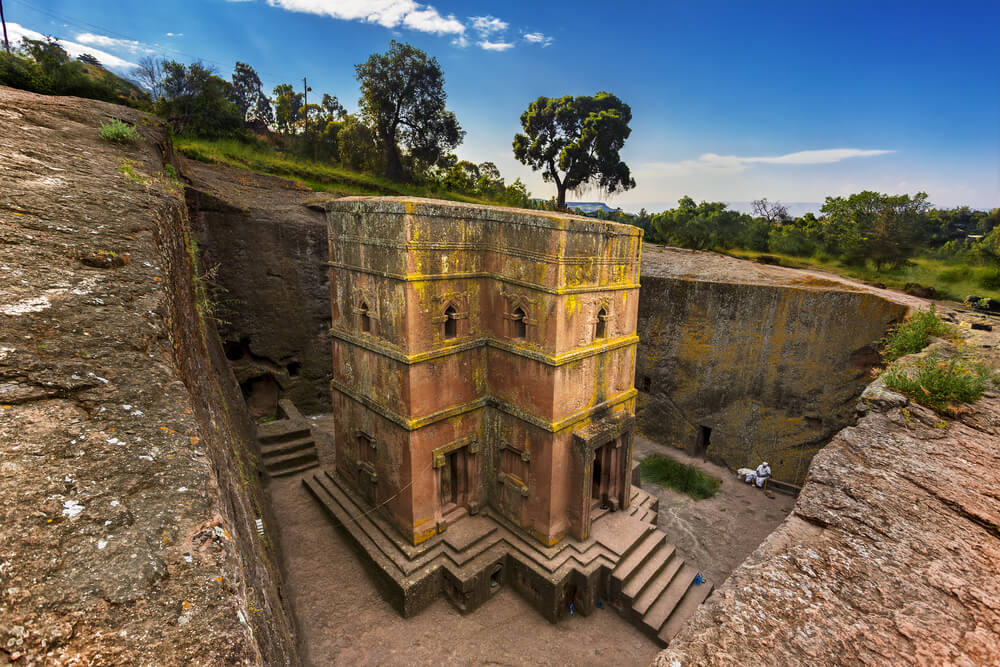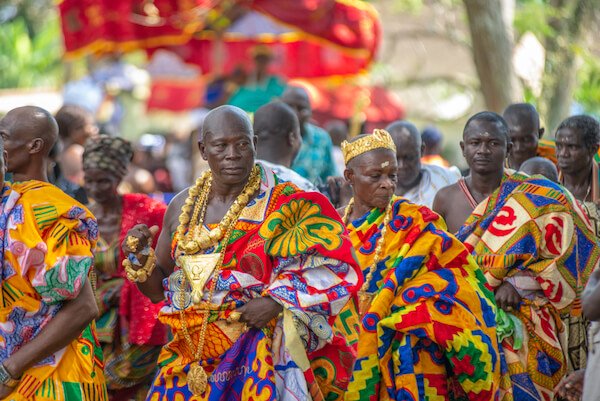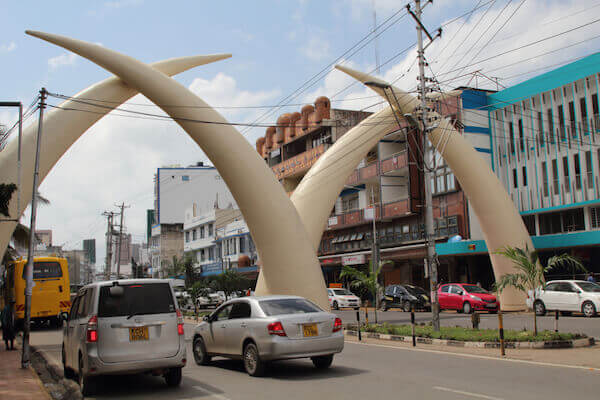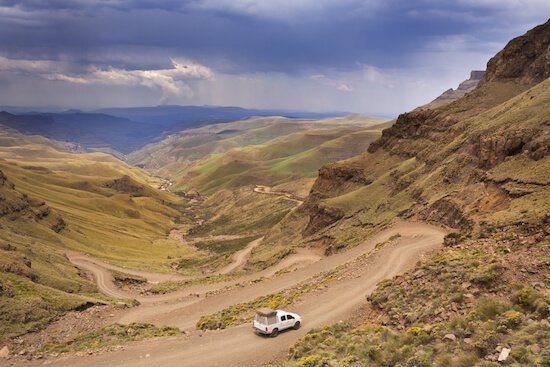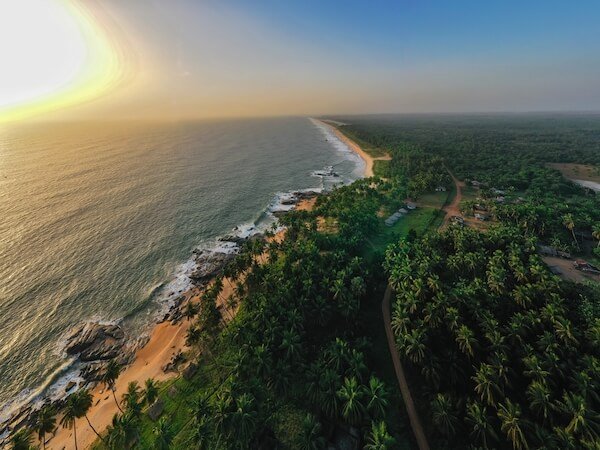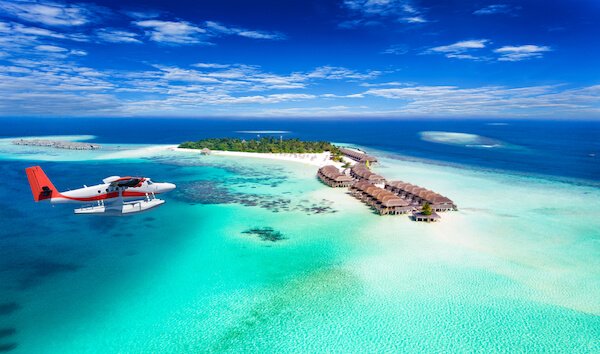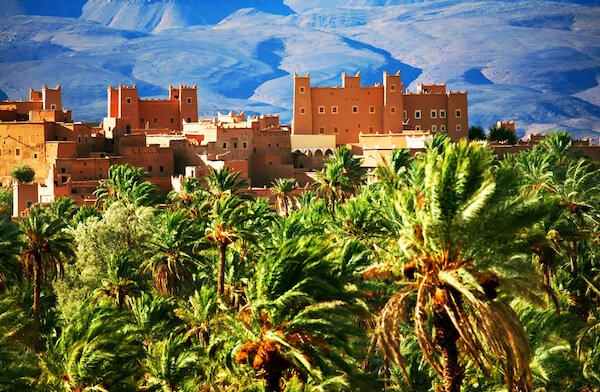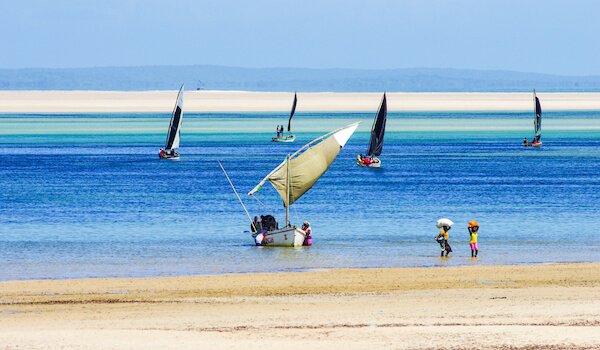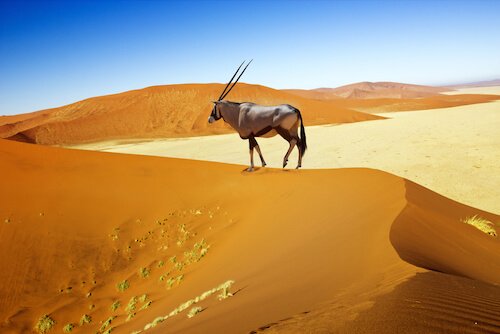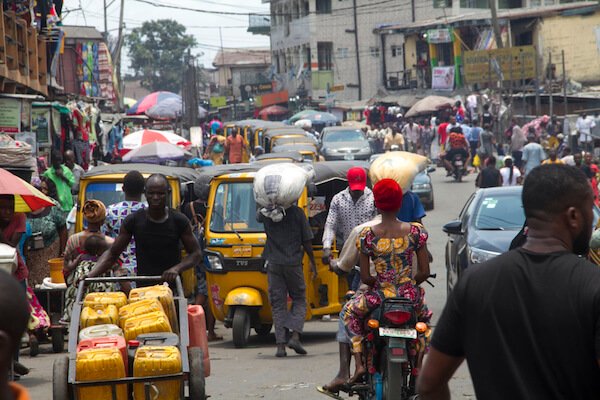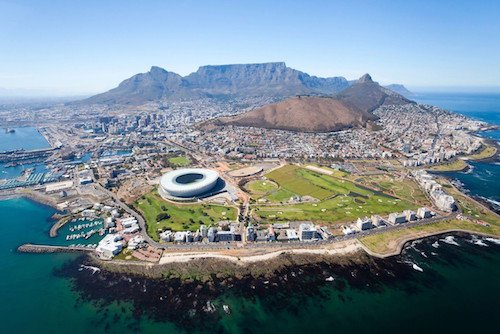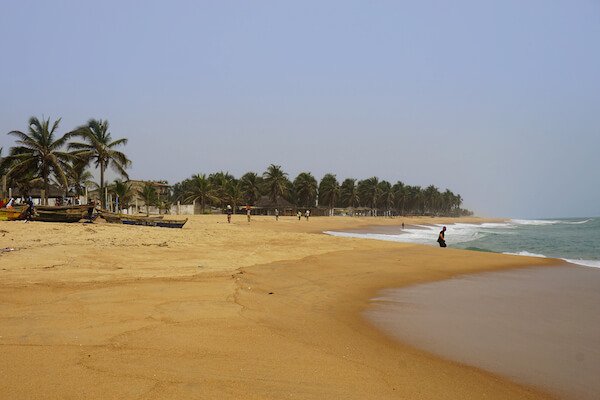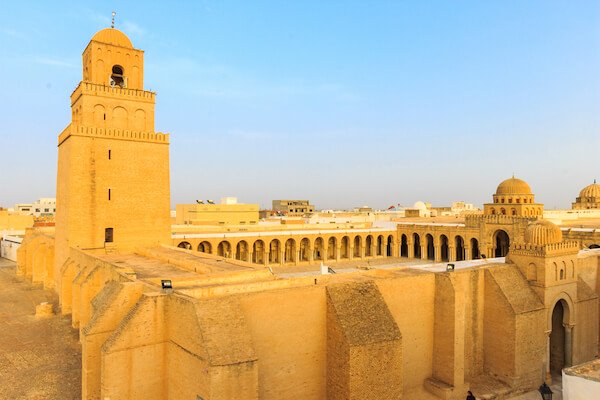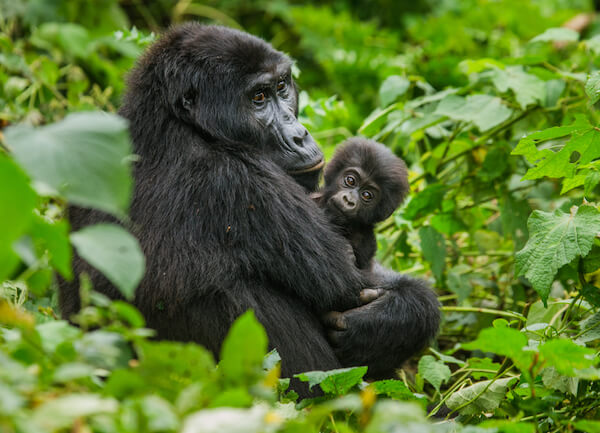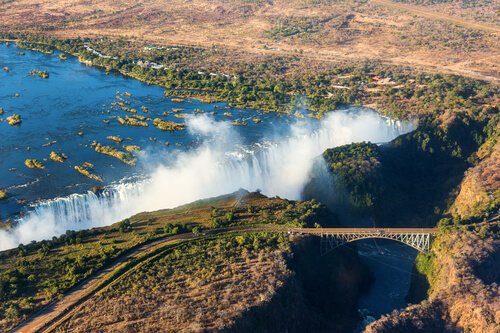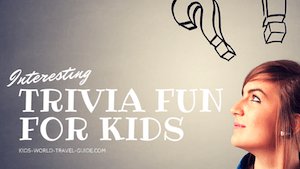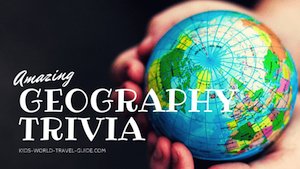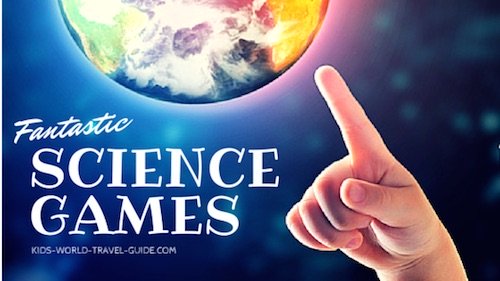- Homepage
- Seychelles
Seychelles Facts
Here are some interesting Seychelles Facts which were chosen and researched by kids especially for kids.
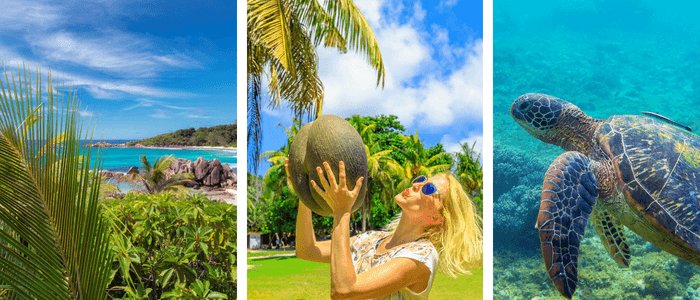 Seychelles stunning beaches - Coco de mer - Giant turtle
Seychelles stunning beaches - Coco de mer - Giant turtleSeychelles Facts for Kids
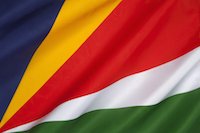
- Population: almost 100,000 people live on the Seychelles (2022)
- Capital: Victoria with 26,000 inhabitants
- Name: République de Seychelles (Republic of Seychelles)
- Motto: 'The End Crowns the Work'
- Government: Parliamentary Republic, Democracy
- Language: English, French, Seychellois Creole
- Religion: mainly Roman Catholics
- Currency: 1 Seychellois rupee = 100 cents
- National Day: 18 June
- National Symbols: Payanke, Tropical Bird Orchid (national flower), Coco-de-Mer Palm (national tree), Giant Tortoise (national animal), Black Parrot (national bird)
- National Colours: red and blue
- History: The islands were first spotted by Vasco da Gama on his explorations in the 15th century. Later the French and British settled on the island. The Seychelles became independent from Britain only in 1976.
Seychelles Facts | Seychelles Map
The Seychelles islands are located in the Indian Ocean over 1,500 km/ 932 miles to the east of the African continent.
To see the location of the Seychelles, look for the name on the map and zoom in (click on the + sign to the left) to see the many tiny islands dotted in the Indian Ocean.
Seychelles Facts | Geography
The Seychelles are made up of 115 islands of which 41 belong to the Inner islands and house over 98% of the population. The other islands are coral islands and belong to 5 coral atolls and the reefs of the Outer islands.
The many islands of varying size extend between 4° and 10° south of the Equator. The majority of the islands are not inhabited.
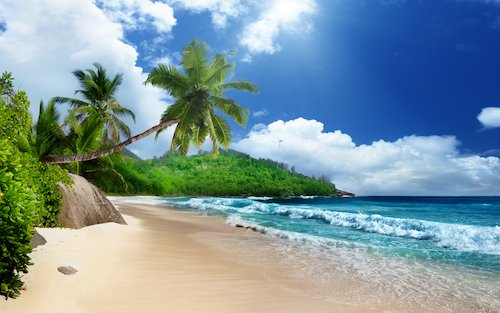 Seychelles: Indian Ocean Islands
Seychelles: Indian Ocean IslandsThe islands were formed either on granite or are the tops of coral reefs of the Mascarenes. Most of the islands are granitic. The granitic islands include Mahé, Praslin, La Digue and Silhouette.
There are two UNESCO world heritage sites on the islands: Vallee de Mai on Praslin island and the Aldabra atoll.
Most of the Seychelles islands are covered with lush jungle and there are many nature reserves on the islands.
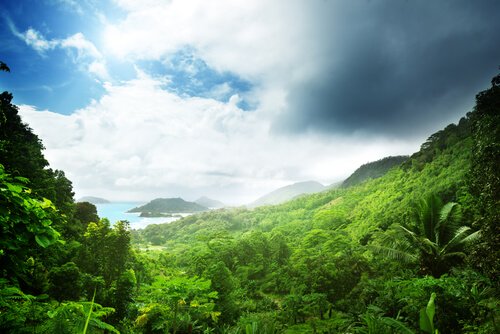 Seychelles jungle
Seychelles jungleThe Seychelles islands can be reached via a 4-hours flight from Dubai or a 5-hours flight from Johannesburg/South Africa and a 12-hours flight from London/UK.
Seychelles Geo Superlatives
- The Seychelles is the least populated country of the African continent.
- The inner islands of the Seychelles are considered to be the world's oldest granite islands in the middle of the ocean.
- The Aldabra atoll is the world's largest raised coral atoll. Here four large coral islands enclose a turquoise lagoon
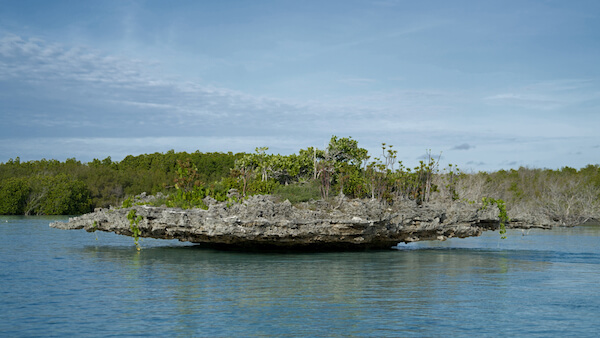 Aldabra coral island
Aldabra coral island- Mahé is the largest island of the Seychelles. The capital city Victoria is located on Mahé.
- The island's highest mountain is the Morne Seychellois, with a height of 905 m/ 2,969 ft is located on Mahé island.
- The seeds of the Coco-de-mer palm tree are the largest and heaviest seeds in the world. The coco-de-mer is also known as 'double coconut'. The seed grows to half a meter in diameter (20 inches) A coco-de-mer seed can weigh up to 30 kg/ 4.5 stone!
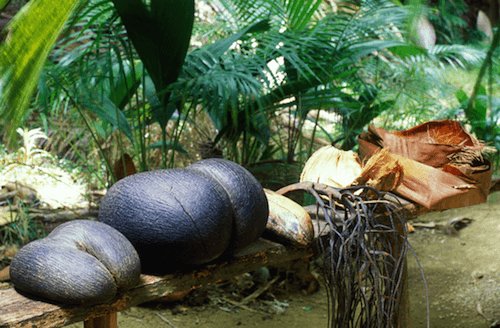 The huge 'Coco-de-Mer' seeds
The huge 'Coco-de-Mer' seedsSeychelles Facts:
Tourist Attractions in Seychelles
For many, the Seychelles are a typical tropical island paradise. There are splendid sandy beaches, people lead a more relaxed lifestyle and the weather is always summery warm. There are many attractions tourists can explore when visiting the beautiful Indian Ocean islands.
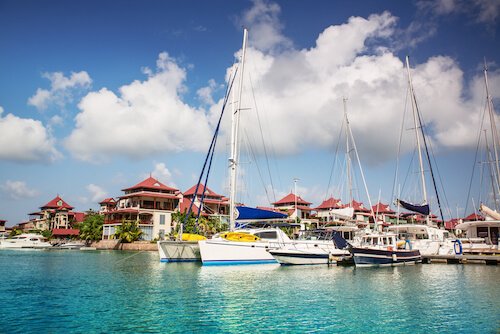 Mahé island
Mahé island- Start with sightseeing on Mahé: Victoria, the islands capital city is located on Mahé island and is not only home to the main airport of the Seychelles but also the main shopping and entertainment hub of the archipelago.
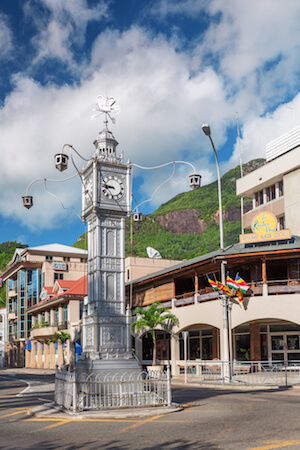 Clocktower in Victoria
Clocktower in Victoria- Explore the city and the local cultures: The marina and the city centre can easily explored on foot in a couple of hours. Visit the Hindu temple and the Victoria Museum on Mahé or see and taste the variety of local food at the daily Victoria market
- Relax on Eden Island: this is a man-made island off the Mahé coast. Here entertainment meets leisure at the new luxury island off the Victoria coastline where there are little boutiques, restaurants and a shopping mall.
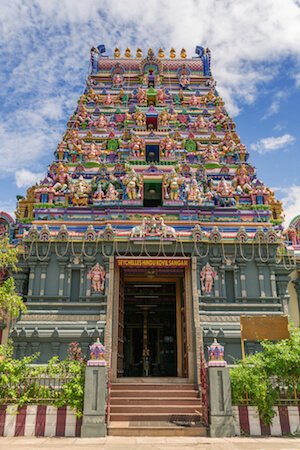 Hindu Temple
Hindu Temple- Admire the wildlife: There are giant tortoises and colourful bird life on Bird Island, the northernmost island of the archipelago, which you can visit on a boat trip from Praslin island.
- Water sports galore: Enjoy the sandy white beaches, go swimming, sailing, waterskiing or diving in the warm waters of the Indian Ocean.
- Pedal power: Rent a bicycle and explore the small La Digue island with the unique rock formations
There are so many exciting places, amazing white sandy beaches, picturesque towns and villages, ancient military ruins to visit, please make sure you come back to this site again, as we will add more information on places to visit.
Seychelles History and Culture
Seychelles history dates back to 200 - 300 AD. The Arab seafarers first recorded seeing the Aldabra atoll of the Seychelles in the 9th century. Today people from all over the world live in the Seychelles main island Mahé.
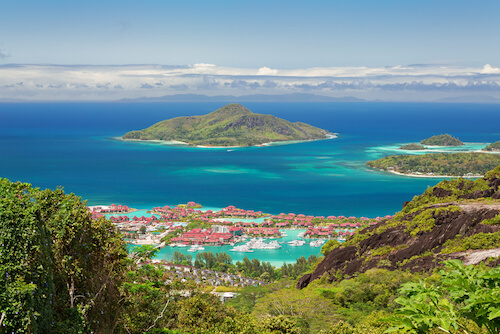 Eden Island on Seychelles
Eden Island on SeychellesIn the 15th century Portuguese explorer Vasco da Gama passed the islands on this route around Africa and Asia. However, the many islands remained uninhabited until the French explorer Lazaré Picault and his men first permanently settled on Mahé island in 1770.
The British arrived in 1814 and from then on the population on the islands grew. Victoria, the main settlement on Mahé, was for many years an exile for troublemakers from the British mainlands. Victoria became the capital and is named in honour of Queen Victoria. Farms, and estates, were established and produced coconuts, exotic fruits as well as cotton and sugar cane.
From the mid 20th century, the people struggled to become their own country and in 1976, the Seychelles finally became an independent nation within the Commonwealth nations.
Did you know? The Seychelles islands are names after King Louis XV's finance minister whose name was Jean Moreau de Séchelles.
Seychelles Facts | People and Languages
The Seychelles have the smallest population of any African independent country and the country is one of the most prosperous and rich countries on the continent.
Over half of the population live in urban areas, that means in the capital city Victoria or in larger towns. Almost 90% of the people living in the Seychelles live on the biggest island Mahé which counts over 80,000 inhabitants.
The children start school at the age of six years and then will go to school for 13 years. Children learn to read and write in Creole at school but they also learn English and French.
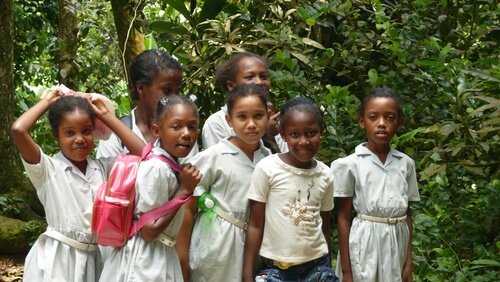 Seychelles children in school uniform
Seychelles children in school uniformFrench, English and Seychelles Creole (which the locals refer to as Seselwa) are the main languages in the Seychelles. English is considered by many as the main business language. There are also French newspapers and TV and radio news are also available in French. However, most people speak Seychelles Creole at home, and this language is widely spoken in schools and shops as well.
Seychellois Créole is based on the French language and similar to the créole spoken on the African islands of Mauritius and La Réunion.
Asian languages such as Tamil, Urdu, Hindi or Mandarin are spoken by the Indian and Chinese population.
Seychelles Facts | Food in the Seychelles
Coconuts, cinnamon, sweet potatoes and exotic fruits (such as breadfruits, star fruit, passionfruit and bananas) are the main agricultural products in the Seychelles.
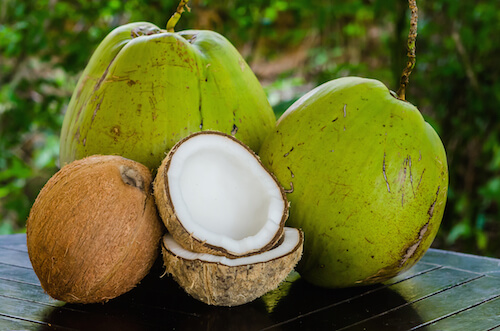 Green coconuts and ripe coconuts
Green coconuts and ripe coconutsThe green coconuts are not that mature and have less flesh but are great for a refreshing drink as they contain more coconut water.
Seychellois main dishes contain: fish and seafood, fresh vegetables and fruits as well as rice. The cuisine is well known for its freshness, exotic spices and tropical fruits.
The Seychellois cuisine has many influences. Asian, Indian as well as European specialties all can be found in the local cuisine. Try to visit also the food markets in the major towns such as the one in Mahé. Here is a picture of a typical Seychellois food.
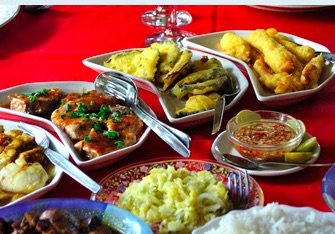 Typical Dishes of the Seychelles
Typical Dishes of the SeychellesHere is some typical Seychelles food and typical dishes of the Seychelles islands:
- Coconut Curry: spicy stew made with coconut milk, chicken, fish and squid
- Ladobe: this pudding can be served either as a sweet dish or is cooked as a spicy and savoury variation, but usually made with breadfruit, bananas, yams and coconut. The savoury version is often prepared with salted fish.
- Salted Fish: is used in many dishes to give it a savoury flavor
- Shark chutney: made with boiled and mashed shark meat
- Grilled Fish or Octopus: often served with a sauce made of crushed chilli, ginger and garlic
Have you tasted a fresh coconut drink? The liquid of the coconut or 'milk' is very watery and has a sweet taste.
Seychelles Facts
Seychelles Animals and Plants
The many islands of the Seychelles archipelago are a sanctuary for rare and unique animals and home to a variety of indigenous plants.
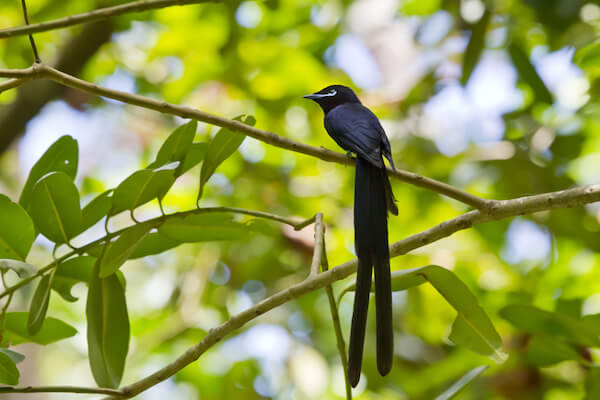 Paradise Flycatcher
Paradise FlycatcherThere are the beautiful Seychelles bird called 'Paradise Flycatcher', the black parrots and blue pigeons are just some of the many colourful birds living on the islands. The 'flying foxes' are the only wild animals on the islands.
Then there are the plankton-eating whale shark and giant tortoises which the islands are famous for. The tortoises are in fact not only huge, but also the heaviest land tortoises in the world.
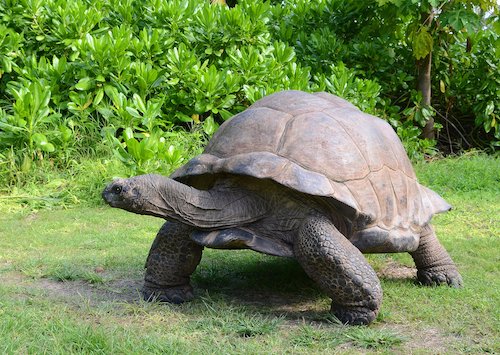 Giant tortoise
Giant tortoiseMany of these giant tortoises live on Bird Island, which is known also for its millions of sooty terns.
The islands have several nature reserves to protect the rare animals and plants. Among the unique plants are the "jellyfish trees", of which are only eight trees left and there are the unique palm trees with the huge coco-de-mer seeds.
Popular Pages
Competition Winners 2022
Resources for Seychelles Facts
- Bird Island Seychelles. "The Sooty Tern Colony". Bird Island. Last accessed 15 November 2022
- Seychelles Tourism Official. "The Islands". Experience Seychelles. Last accessed 15 November 2022
Image source for Seychelles Facts page: Seychelles Tourism Board/Thanks to Shelley Martin/LloydOrr. CIA World Fact Book. Image Credits on Seychelles Facts: Seychelles Tourism Board and shutterstock.com, Image of school children by DKO/Shutterstock.com
More Countries in Africa
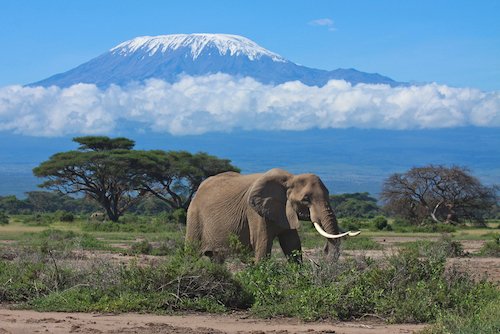 Tanzania
TanzaniaLike what you read?

|
Simply share the html code below. Copy and paste onto your website, blog or Facebook page: <a href="https://www.kids-world-travel-guide.com/seychelles-facts.html">Kids World Travel Guide: Seychelles Facts for Kids</a> |
Like us on Facebook
Competition 2025
CLOSED

